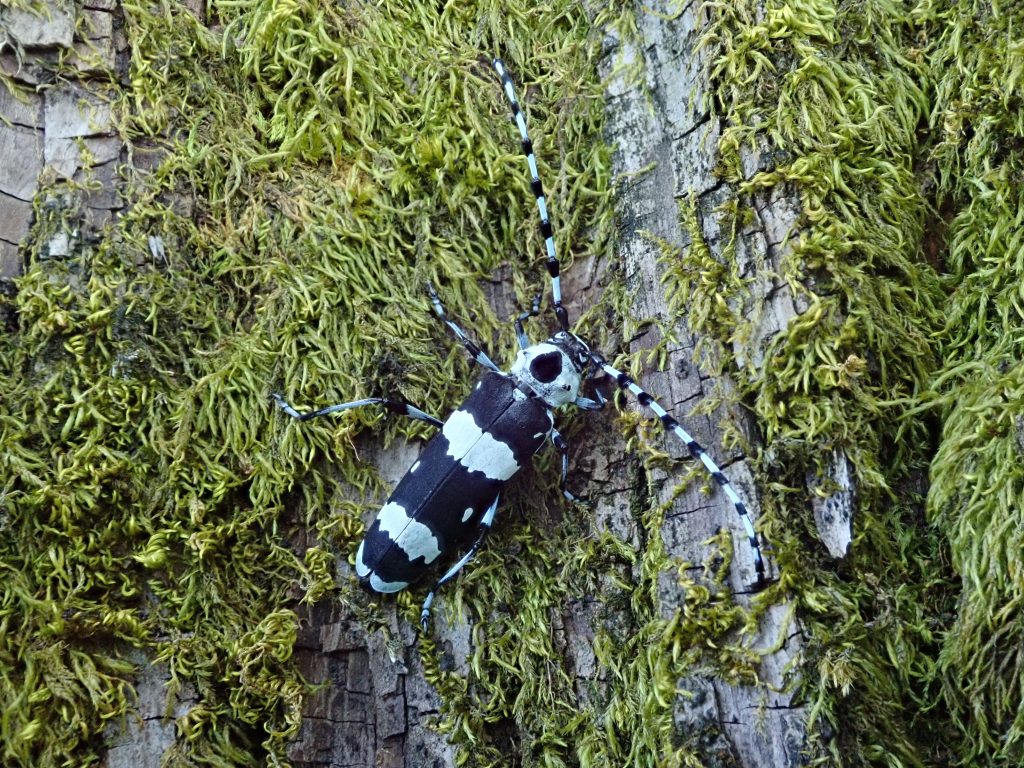
During this hot weather (3 consecutive days of all time record highs in the Vancouver/Portland metro area) I have finally noticed that many insects rest on the shaded sides of trees and walls during the heat of the day, and have taken to doing bug walks at the local cemetery, where there is ample shade and a large, concrete block maintainence building. Yesterday afternoon, when it hit 115⁰, I went for a stroll. The streets were deserted of people, but the trees held some interesting insects.
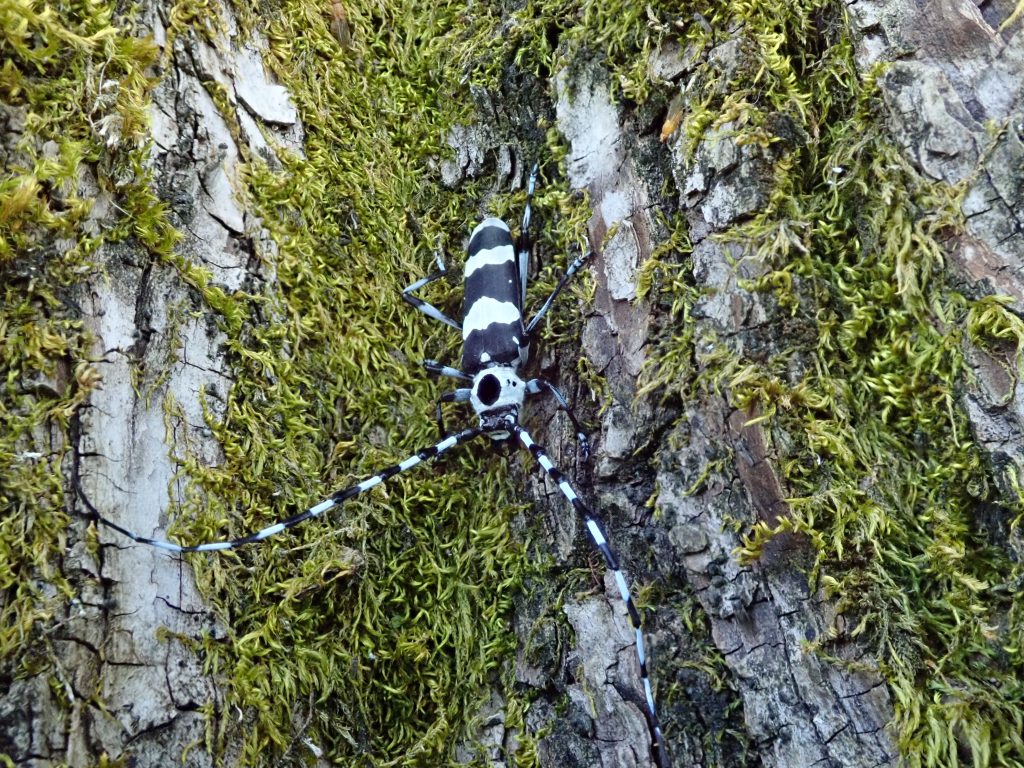
And by far the most interesting insects were these Banded Alder Borers! These long-horned beetles (family Cerambycidae) have been high on my bug wishlist ever since I first saw pictures of them, and this first sighting did not disappoint. Not only are they beautiful, and impressively large, but the banding is almost surreal (and may well be the inspiration for an ancient Hopi clown, as discussed here). And yet I can see where it would be effective camouflage in dappled or barred shade. The female was very cooperative, and didn’t move at all as I took several photos. I didn’t see the male, which was 2’ higher on the tree, until I moved to get a different angle on the female. But he only let me get one photo before he became agitated, and then so did the female. Shortly afterwards they flew off, which was particularly startling from up close, because those black and white banded wings in motion were stroboscopic. Bugs of the year during the hottest temperature this area has endured in recorded history. I will not forget that experience anytime soon!
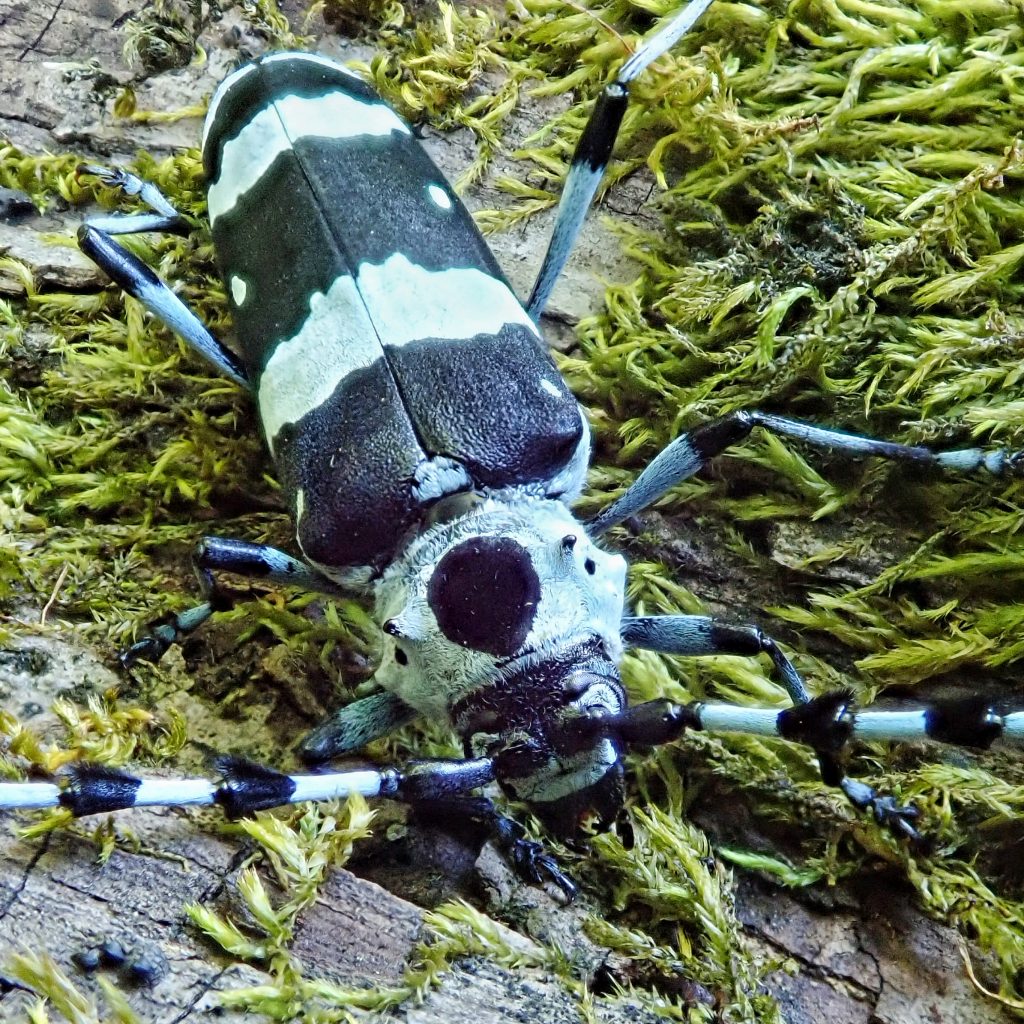
It is interesting to note that Rosalia funebris seems to be attracted to fresh paint, and at times many will congregate on that viscid surface. It has been theorized that the smell is similar to that of their pheromones (and this species is known to produce aggregation pheromones, as discussed here), or that it reminds them of the scent of a dying tree, but nobody knows for sure what attracts them. It’s also interesting, though possibly coincidental, that I saw my first ones during a heat wave, since excessively hot and dry weather is known to promote emergence of adults.
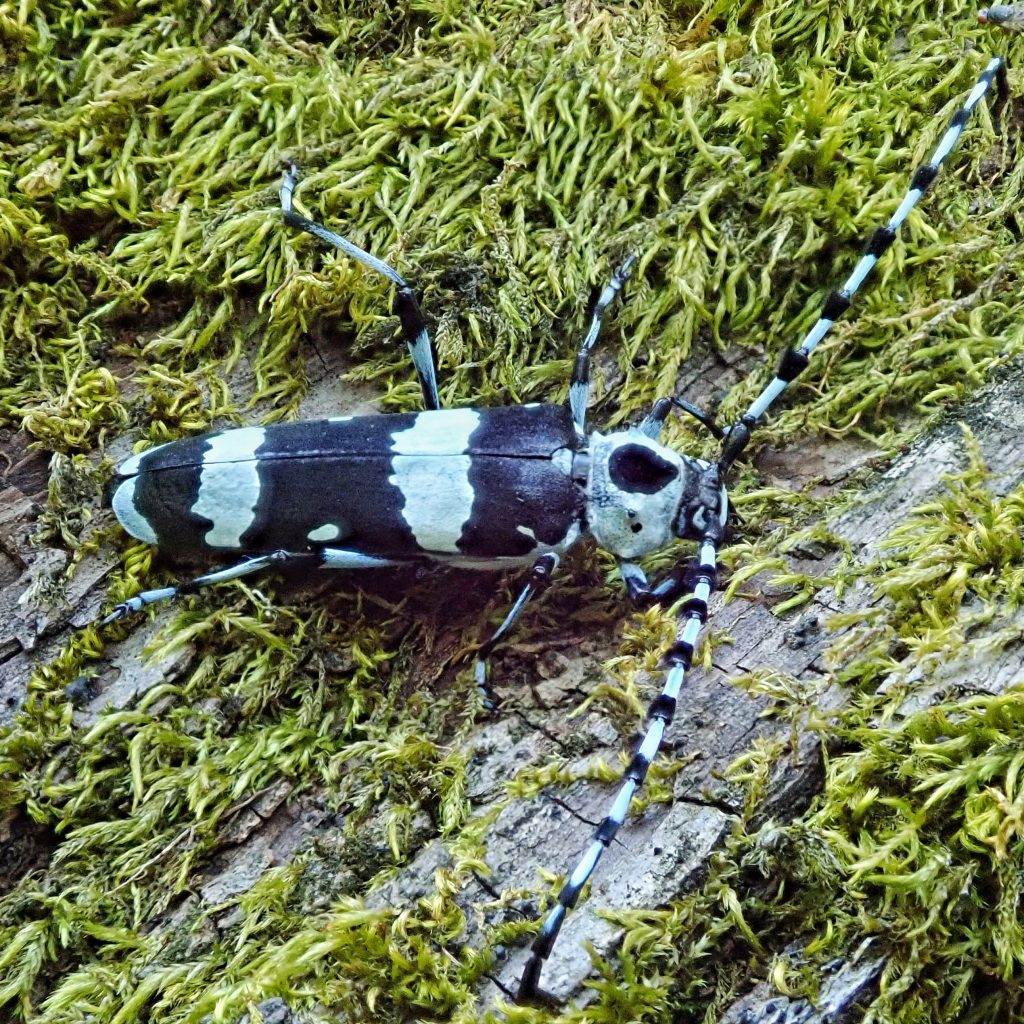
Because they only attack dead and dying trees they are not considered to be a pest species, though the presence of them on a tree may indicate health problems for that tree. People have confused them with Anoplophora glabripennis (Asian Long-horned Beetle), an introduced pest species, but frankly I don’t know how. Asian Long-horned Beetles (ALBs), though roughly as large as Banded Alder Borers (BABs), have white spots on the elytra, rather than white bands, and the pronotum is solid black, as opposed to white with a black dot. The ALBs, which are known to attack live, healthy trees, haven’t been found yet in Western North America, whereas BABs are native and beneficial in the decomposition of dead wood.
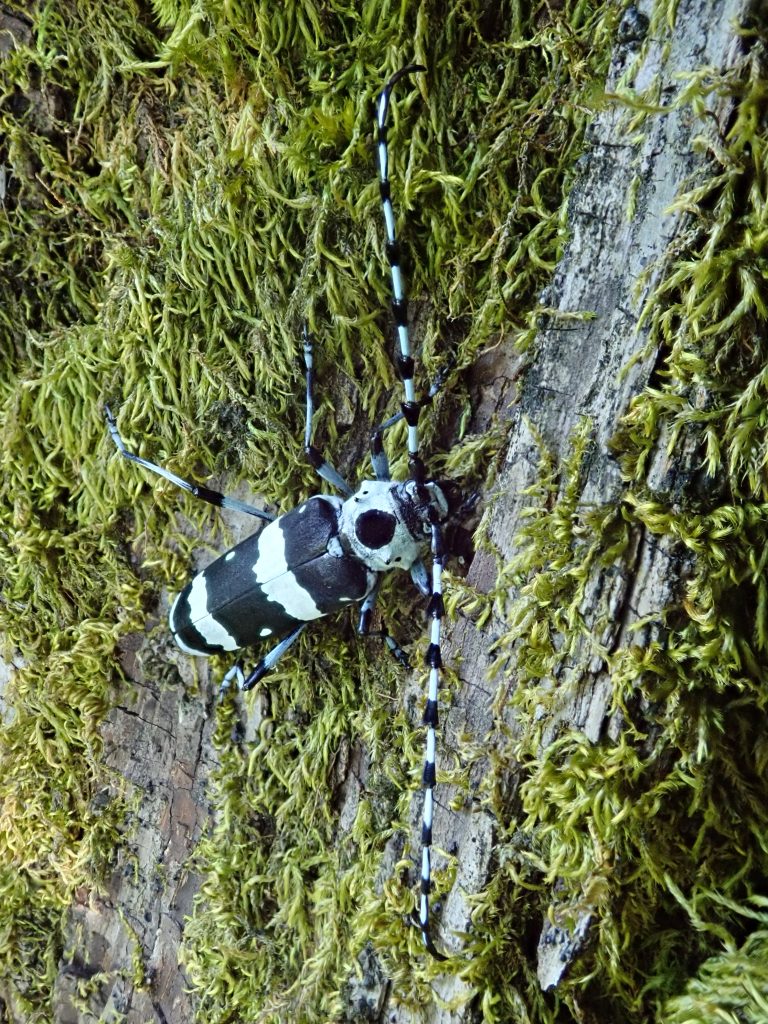
While it never hurts to report unusual insects to your local extension service (although education as to what is native or beneficial/harmless, since not all introduced species have a negative effect, and what is introduced or harmful, since some natives can have deleterious effects in certain situations, is not only useful but rather fun!), please do not kill any insect you don’t know the identity of just because you are afraid it may be an invasive pest. Thousands of innocent wasps and bees were killed because someone thought they might be an Asian Giant Hornet (Vespa mandarinia). Climbing off my soapbox now.

Description-Large (up to 40mm long, not including antenna) beetle with black and white bands on the elytra, and a white pronotum with a large black dot and short spikes on either side of the dot; antennae are black and white, longer than the body in males and about the length of the body in females.
Similar species-None
Habitat– Deciduous forests and woodlands
Range-Western North America; region wide in appropriate habitat.
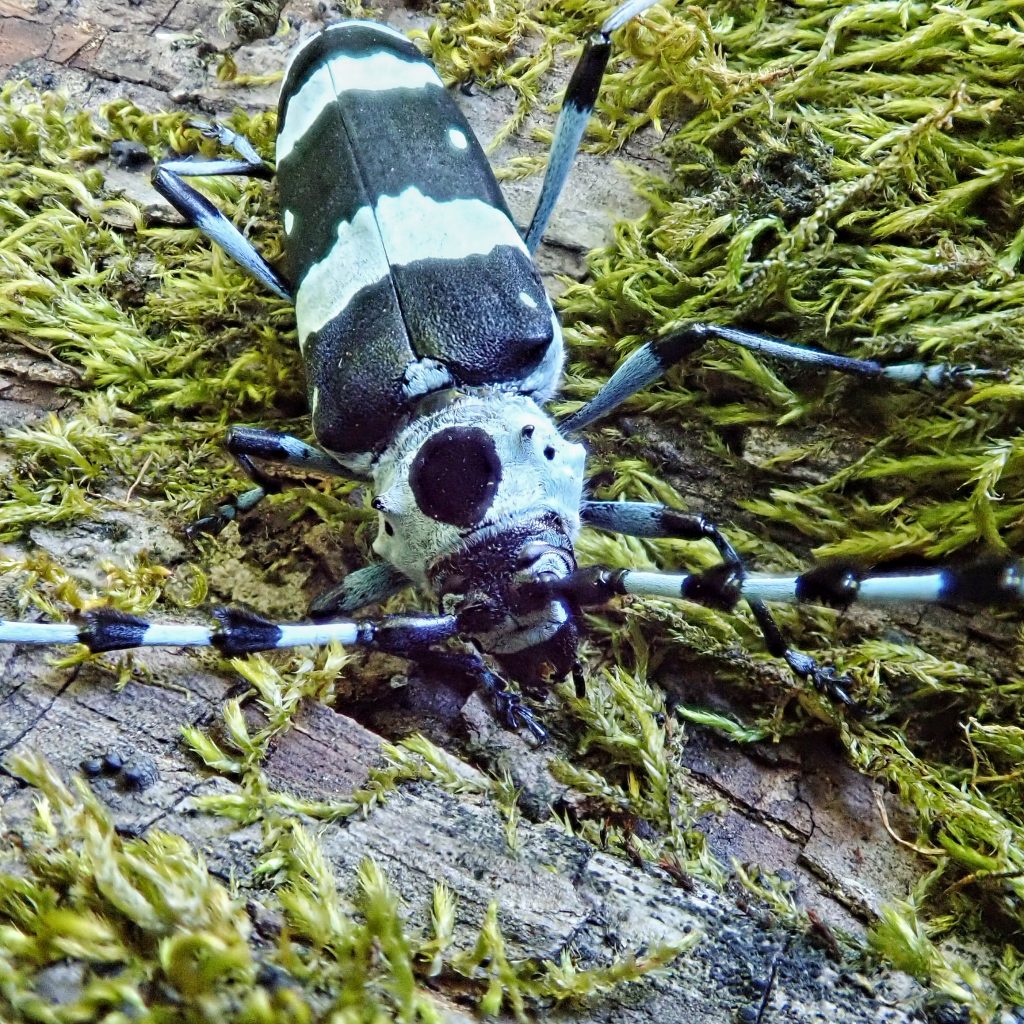
Eats-Larval hosts include alder, ash, maple, willow, Oregon myrtle and other hardwoods, and the larvae eat dead and dying wood; adults feed on nectar and pollen, and occasionally on fruit.
Eaten by-Woodpeckers are their primary predator in the larval stage; I would guess that the bold banding of the adults, especially in flight, startles many insectivorous birds and mammals, but undoubtedly many are still preyed upon.
Reproduction-Eggs are laid on dead or dying branches; eggs hatch in two weeks, and the larvae bore through the bark and begin feeding on the wood; larvae overwinter as pupae, and emerge as adults in the spring
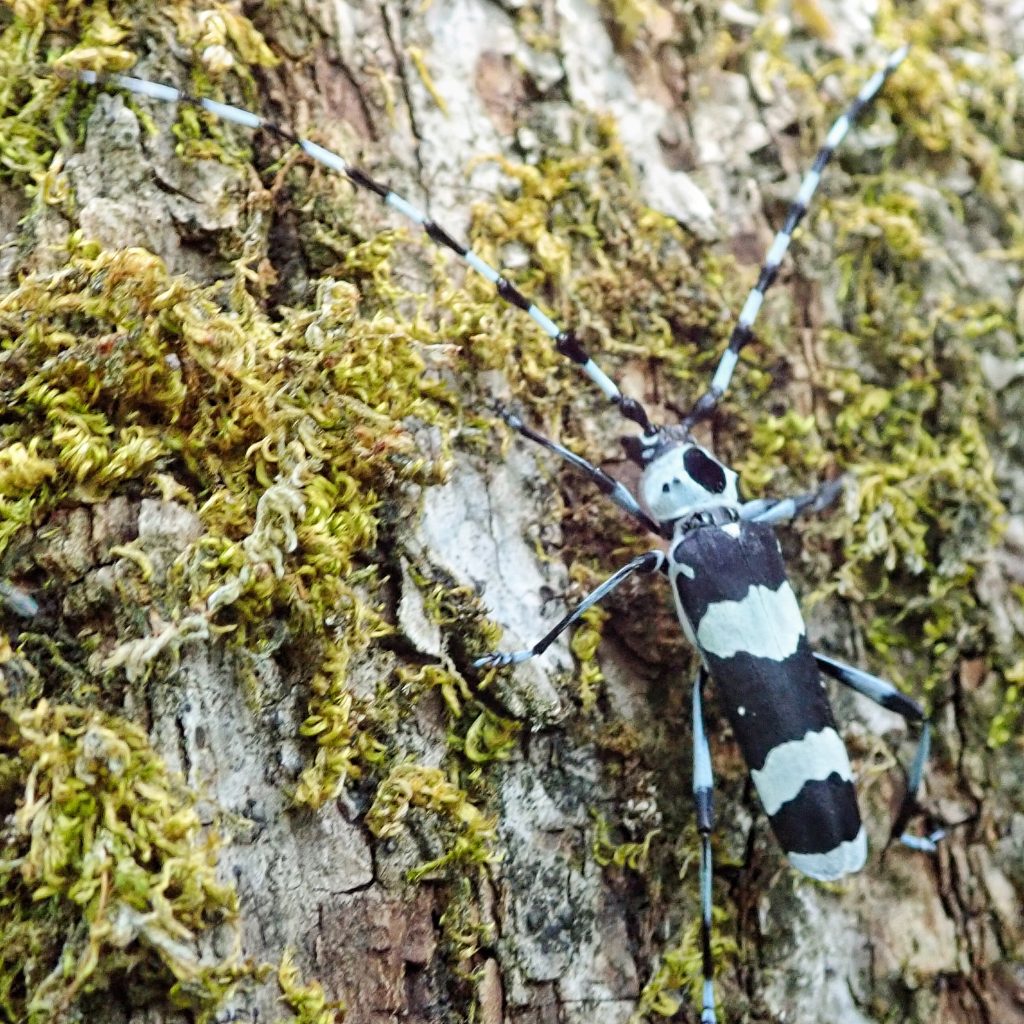
Adults active-March to August
Etymology of names–Rosalia would be ‘being red’ in Latin. But I cannot ascertain what that refers to, or even if it was a descriptive word or the name of a person. The specific epithet funebris is Latin for ‘pertaining to a burial/funereal’, and I would guess that that has something to do with the black and white patterning. But neither Audinet-Serville nor Motschulsky bothered to explain themselves.
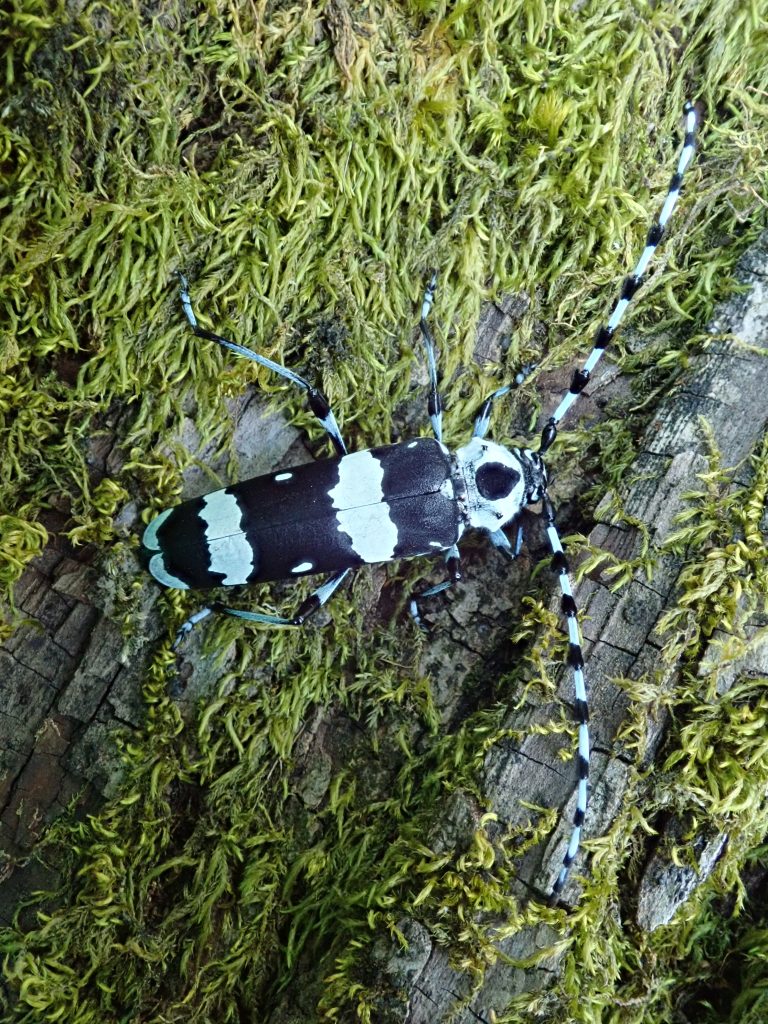
https://entomology.oregonstate.edu/sites/agscid7/files/entomology/Banded_Alder%20Borer_13.pdf
http://ipm.ucanr.edu/PMG/GARDEN/PLANTS/INVERT/bandaldbor.html
https://bugguide.net/node/view/8975
https://archives.evergreen.edu/webpages/curricular/2009-2010/ize2010/web/rosalia_funebris.html
https://www.jstor.org/stable/27571102?seq=1#metadata_info_tab_contents
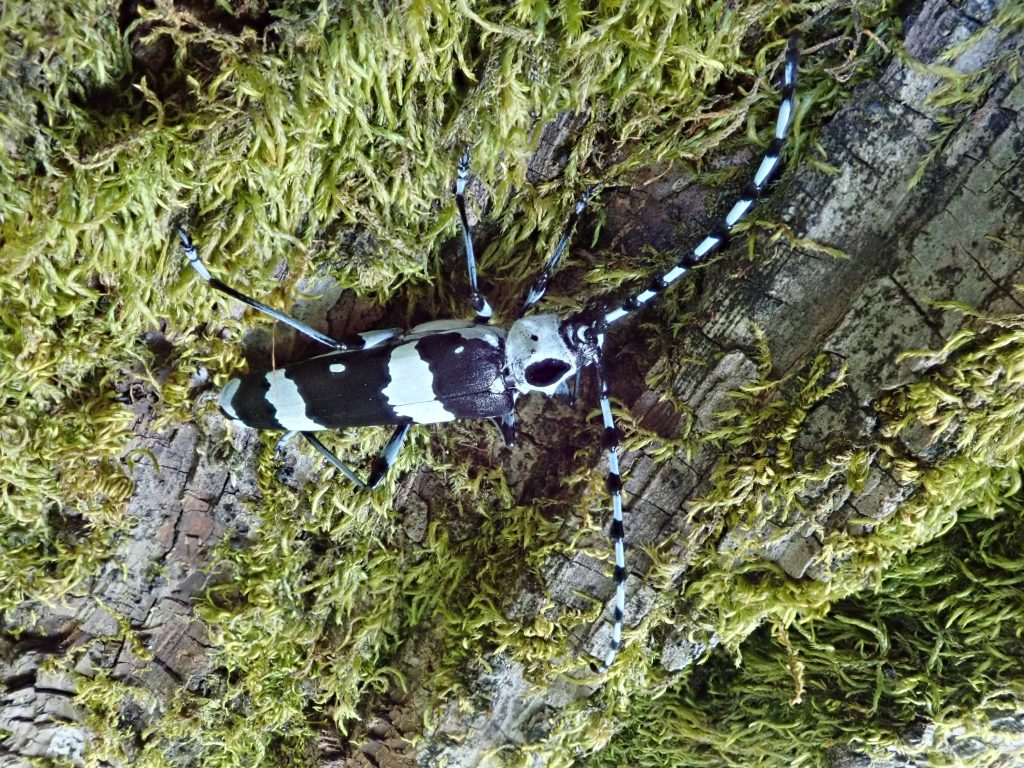
I can confirm the Banded Alder Borer’s interest in fresh paint. I had them show up when I was painting my house in suburban Beaverton a few years ago. I am emailing pictures of them to you. They were so interested in the paint that they landed on my clothing where the paint had spilled.
Very cool! I’d love to see the photos!
Dan,
eMail to that address bounced.
Sorry. I have not figured out your email address.
Recreationalnaturalist@10000thingsofthepnw.com. This is now correct
Because I can’t spell🤦🏻♂️
Recreationalnaturalist@10000thingsofthepnw.com
Cool profile & pictures. Even still, you won’t find me wishing for more days with temps over 100! ☺️
Yep! very interesting looking !! Never seen one all my life until we painted the poles outside at our gas station in Calif.
Saw one today 7/14/22 on the railing of a house in Frazier Park, Ca. Nevsr saw one before. It sat on the railung for quite some time but, eventually flew away. It is also very hot today and we had been doing some painting.
Cheers
M
That’s cool!
Saw 2 today! All at my workplace lol, it was a good 90° here in Eugene, OR 🙂
Very cool! That’ll brighten a workday!
We found a dried perfectly still whole one today in my Backyard here in Spokane Valley Wa.
We were not sure what it was! Very odd looking. I haven’t ever seen one here before. I live in a Residential Area also. It was up in the 100’s here last week and 90’s this week.
Interesting! They emerge in the heat. Thanks for sharing that.
Had 2 in my house in 2 days. We have a dead/dying tree in our backyard that we have not yet cut down. I guess they’re coming in from there.
Probably so, Bethany! So cool that you’re getting to see them!
We were actually fortunate enough to see a pair mating yesterday. They sure are beautiful….but, when in flight, they can look pretty scary!
Very cool, Sheila! And yes- they are a whole lot of black and white bug flying through the air!